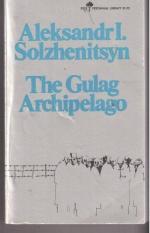|
This section contains 935 words (approx. 3 pages at 400 words per page) |

|
Article 58
The Soviet criminal code of 1926 has 140 non-general articles, but one, Article 58, is through "extended dialectical interpretation," responsible for nearly all Organs activity. It deals with "crimes against public order" and "organized gangsterism" in 14 sections.
Butyrki Prison
Moscow's brutal central transit prison in Tsarist Russia, Butyrki is located in a grim red brick fortress. Muscovites cringe when its great maw opens to admit Black Marias. During the February Revolution, political prisoners are freed, but after the October (Bolshevik) Revolution, it fills again, serving as a transfer camp for convicts en route to the Gulag. Solzhenitsyn passes through 4-5 times and feels at home there. Butyrki has 70 cells, including those in the octagonal former church, where prisoners are treated like "stepchildren." Recalling that bowls are stamped "BuTyur"—as though it were a Health Resort—Solzhenitsyn muses that fat bigwigs who go to Kislovodsk spa to lose 4-...
|
This section contains 935 words (approx. 3 pages at 400 words per page) |

|




